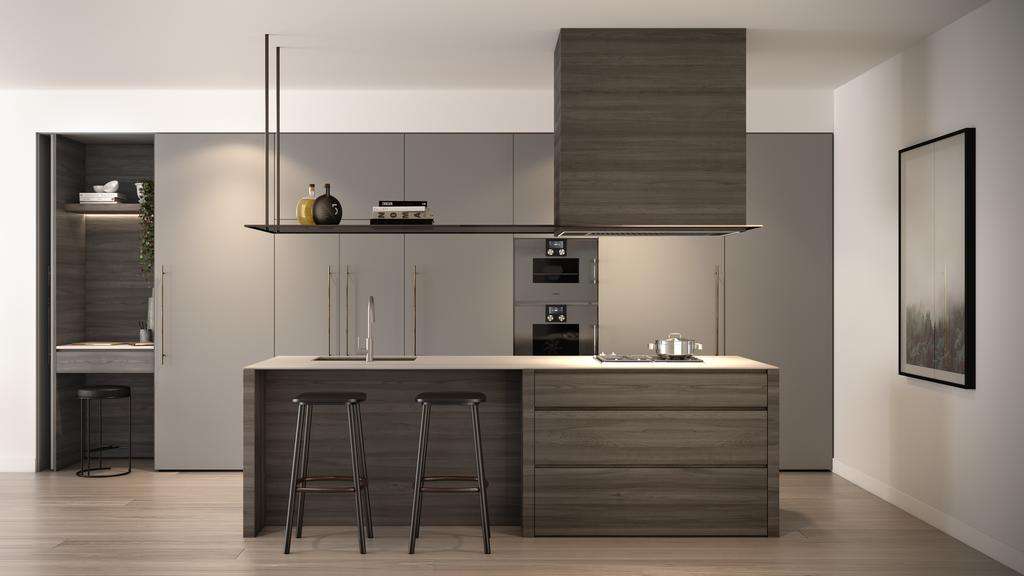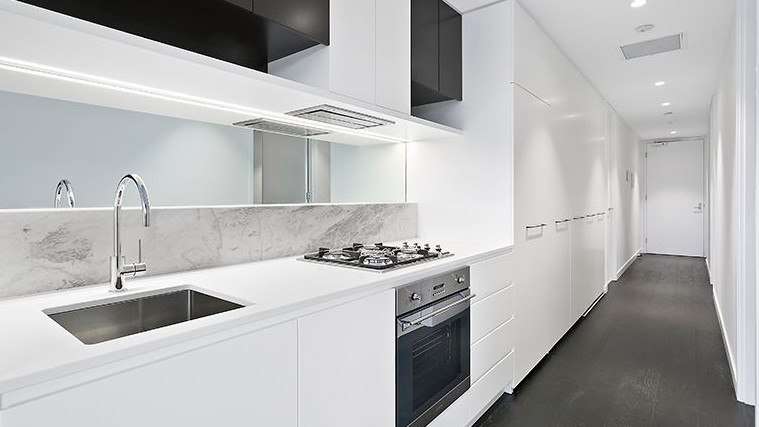Home-owner tastes appear to be changing, and we might be losing our appetite for full-scale kitchens.
As home delivery services and a growing menu of dining options have taken over, developers are responding to a new palette.
Uber Eats data from 2018 shows one Melbourne-based diner ordered more than 650 meals through the service last year, and found that while dinner time Thursday-Sunday was the peak period, an increasing amount of people were placing orders earlier in the week.
Those rising numbers caught the attention of Australian apartment developer Capital Alliance, which is offering a choice of two design schemes at its The Docklands development.
Start your property search
One scheme, dubbed The Docklands, has been designed with storage space for home cooks, the other, The Melbourne, with more open space and an extension to its island bench to suit those who order in.
“More than 70 per cent of our buyers at the residences have gone with The Melbourne scheme, which is more of the order-in theme,” Capital Alliance boss Mohan Du said.
“That figure really did surprise me, I thought the more traditional kitchen would be more popular.”

One of the two kitchen designs on offer at The Docklands, in Melbourne. Photo / Supplied
Both kitchens offer the same list of Gaggenau appliances and are technically the same size, but the response from buyers has sparked potential for even more diversity in the future.
“In the future we might have up to five kitchens to choose from — and that’s where development is heading towards in the long term,” Mr Du said.
Rothelowman interior design principal Mathew Dalby said developers were looking to tweak the recipe for apartment kitchens in a variety of ways.
“Traditionally the kitchen would take up its own separate room, or the largest space at the rear of the apartment — now they are almost secondary or tertiary spaces,” Mr Dalby said.
“Microwaves have dropped off, people have Zip taps so they don’t need space for a kettle. Once you’d usually have a double oven, and now we might put one in.”

The Essence apartments, also in Melbourne, exhibit more slimline kitchens favoured in developments aimed at renters and younger buyers. Photo / Supplied
He said the rise of build-to-rent apartments could push the pendulum further towards “micro kitchens”, with tenants, particularly younger ones, less likely to make use of a big kitchen.
“That market is traditionally a market where the apartments are on the more space efficient side. And the people living there eat out more,” Mr Dalby said.
One of the looming challenges for the industry would be dealing with significant volumes of food deliveries.
“We also have the additional challenge of building residential buildings of 150 apartments where at 8pm at night you could have a lot of Uber Eats drivers coming in and out of the building,” Mr Dalby said.
“We are creating a cold storage space in the common areas of developments.”
Showpiece kitchens were also an increasingly common shared feature in apartment towers, leaving many owners happy to see a less involved kitchen for day-to-day use.
“But food is like fashion, it’s a cyclical thing,” Mr Dalby said.
“Irrespective of the size of the kitchen, we are still going to see it remain as a heart of the home for many years to come.”
- news.com.au





































































